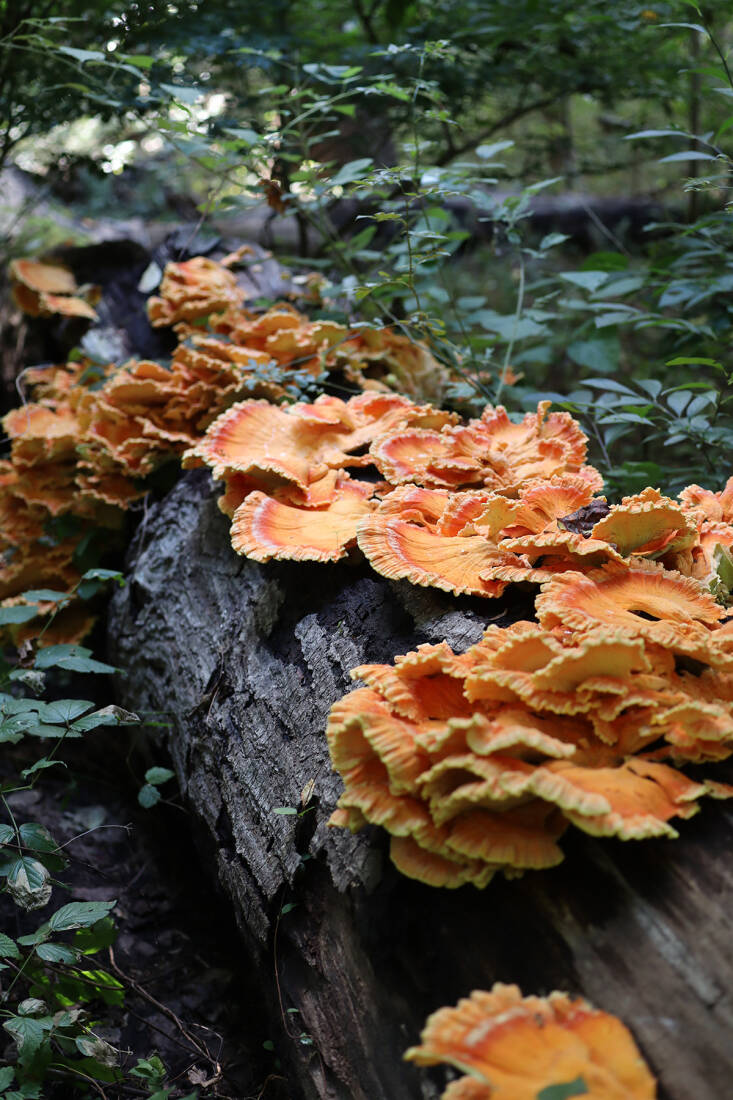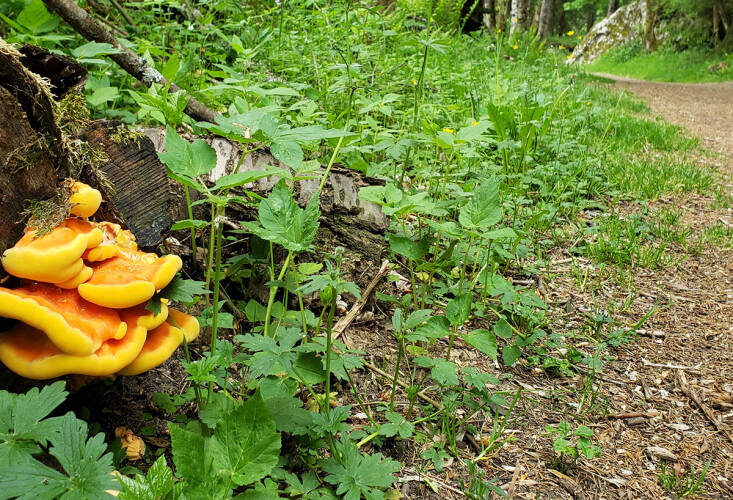All week, we’re resurfacing the most popular posts published on Gardenista this year. If this story is new to you, enjoy! And if you’ve already read this before, we hope you’ll like it just as much as the first time around.
The first time I saw a chicken of the woods, the massive mushroom was frilling the base of a dying oak tree. It was a hot summer day in Cape Town. I had never seen one and was nervous about diving in. I emailed pictures to a foraging friend in the United States. She called her friend Sam Thayer, the wild foods author. Identity confirmed. Back we went and collected some orange-and-white fans. That night, as my husband, my father, and I feasted, my mother abstained, with a look on her face that said plainly: Somebody has to drive you to hospital.
Chicken of the woods is a hugely rewarding mushroom to find and eat. Here’s how to identify this easy mushroom for beginners and what to make with it once you have carried your treasure home.
Photography by Marie Viljoen.
Thirteen years and many “chickens” later, the anxiety I felt then seems silly. What else could it have been? Chicken of the woods has no toxic lookalikes. This electric-hued mushroom is unmistakeable. But a self-preserving seam of fear runs through all of us when faced with a possible (last?) supper of wild mushrooms.

Chickens are ubiquitous across North America and other temperate parts of the world. Saprobic and parasitic tree pathogens, they fruit from mycelium in dying or dead hardwoods. They are polypores, with tiny, sponge-like pores beneath their caps, not gills.
The Laetiporus genus to which chickens belong is still being parsed at a genetic level by researchers, which has resulted in name changes, reclassifications, and the differentiation of subspecies. Collectively, they are edible.

Laetiporus sulphureus has vivid yellow pores underneath its cap, so it is commonly known as sulfur shelf (although I think of it as yellow chicken). The mushroom’s fan-like layers grow on upright or fallen tree trunks or large branches, but not on the ground. They cause heart rot in a tree.

L. cincinnatus (white chicken) has white pores, and causes butt or root rot on oaks. Unlike its shelving yellow cousin, it can seem to grow on the ground away from a tree, but is actually fruiting from the roots.

While they are often associated with late summer and early fall, chickens also fruit in late spring and early summer, in a warm spell after rain.







